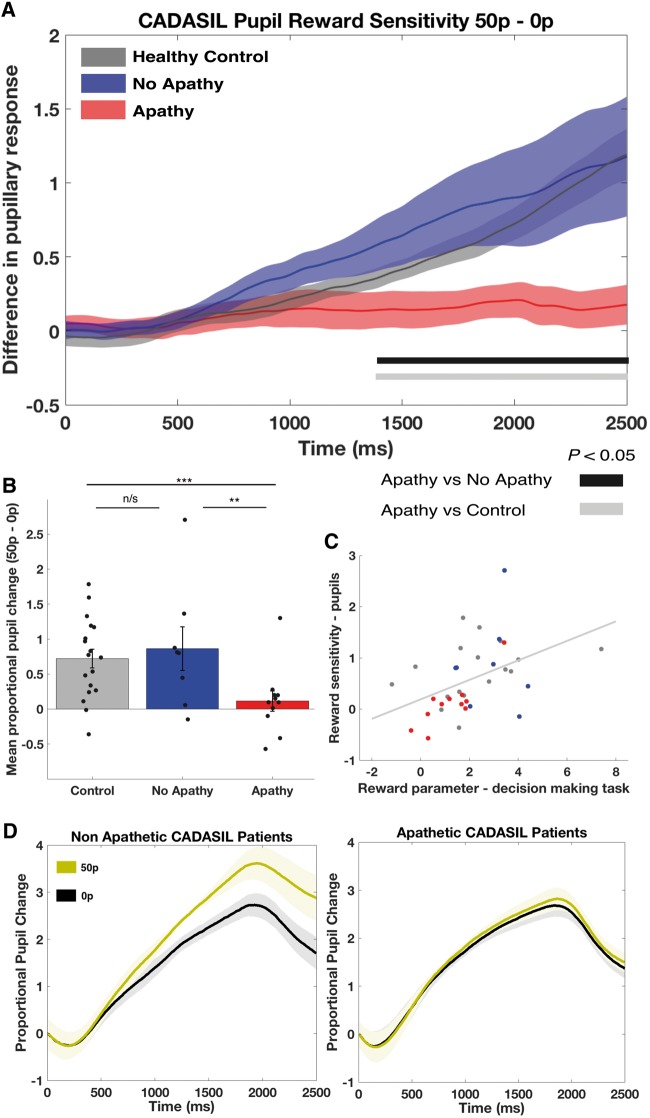Figure 5.
Autonomic responses to reward in CADASIL apathy. (A) Apathetic CADASIL patients had a significantly diminished pupillary response to increasing incentives compared to both non-apathetic patients and healthy controls. Reward sensitivity (indexed as the difference in pupil dilatation between the high and no reward conditions) was assessed at each millisecond time point using multiple permutation testing (to correct for multiple comparisons). Apathetic patients had significantly blunted pupil responses compared to non-apathetic patients and healthy controls from ~1380 ms to the end of each trial. (B) Mean reward sensitivity (time period 1400–2400 ms) was significantly lower in the apathetic group compared to non-apathetic patients and controls. (C) Physiological reward sensitivity, as indexed by pupillary response to reward, was significantly correlated with the reward parameter estimate (α) from the effort-based decision-making task; red dots = CADASIL apathy; blue dots = CADASIL no apathy; grey dots = controls. (D) Actual (proportional) changes in pupil dilatation for high (gold) and no (black) reward conditions, for non-apathetic and apathetic groups. Both groups demonstrate significant pupillary dilatation to auditory cue, however in the apathy group this response is not modulated by reward level. Mean ± SE shown in A and B. **P < 0.05; ***P < 0.01; n/s = not significant.

